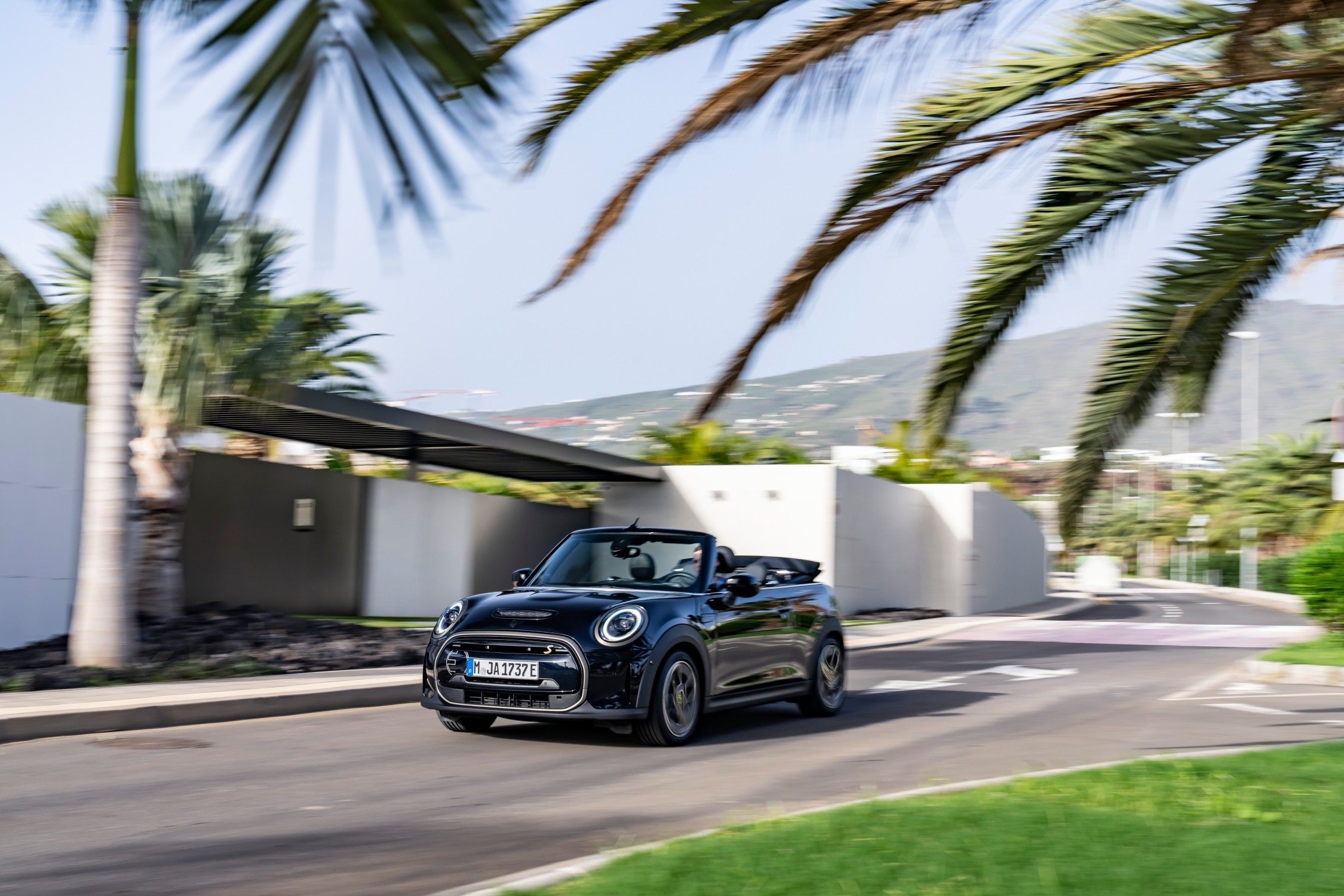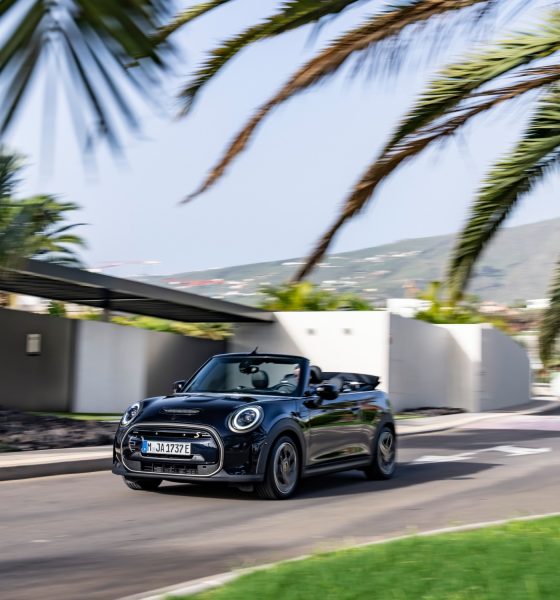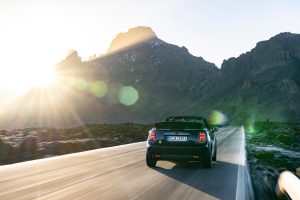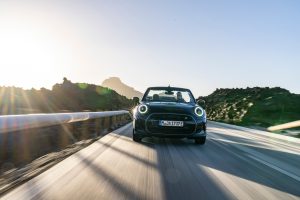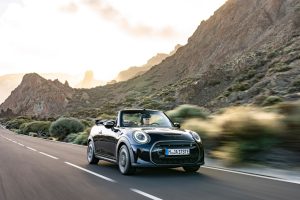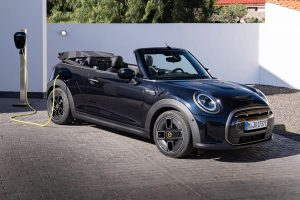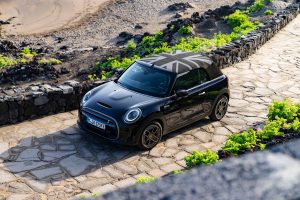MINI has unveiled the first all-electric MINI Cooper SE convertible.
Answer me this, is there a more fun and whimsical car than a MINI convertible? That’s a rhetorical question for those who are curious. The MINI Cooper SE, the company’s foray into EVs, has been putting smiles on faces around the globe since its introduction. With MINI’s new convertible variant, the company is clearly looking to do the same.
The MINI Cooper SE hardtop has gained a cult following worldwide for its fun handling, low entry price tag, and quirky “MINI-ness.” Many of the things that made that vehicle so successful are luckily found in the MINI Cooper SE electric convertible
Using a 28.9kWh battery, the MINI electric convertible has a WLTP range of 124 miles and will charge to 80% in roughly half an hour. But what MINI has focused on is smiles per mile, and that is clear throughout the rest of the spec sheet. With a single motor powering the front wheels, producing 184 horsepower and 199 pound-feet of torque, you are encouraged and obliged to drive the MINI electric at 10/10ths all the time. Further aiding the experience, MINI’s historically popular suspension system, granting the “go-cart-like” feeling that the brand advertises, means the Cooper SE convertible rips through corners as well.
- Credit: BMW Group
- Credit: BMW Group
- Credit: BMW Group
- Credit: BMW Group
- Credit: BMW Group
Perhaps the best specification of the MINI electric is its convertible top, which has become a fleetingly rare feature in the electric vehicle market. Often due to the higher weight of electric vehicles, roll-over standards make electric convertibles a significant engineering challenge. Yet, in the case of the MINI electric, its smaller battery size means that a convertible design is still possible.
“Three years ago, we launched the MINI Electric, and today one in five MINI models sold in Europe is an all-electric MINI,” says Stefanie Wurst, Head of the MINI Brand. “This success has spurred us to implement the small series of the MINI Electric Convertible within only a few months. I’m delighted that we can offer 999 MINI customers an extraordinary and exclusive open-air go-kart feeling.”
That brings us to the bad news. MINI will only be producing 999 electric convertibles, and they will only be available in Europe and the U.K. On top of that, despite the MINI electric hardtop’s approachable price tag of $34,225, the same cannot be said of the convertible. Starting at 52,500 pounds (€59,095 or $63,040), the convertible has a price tag associated with BMW Group’s premium offerings.
MINI did not state if the vehicle would make its way to the North American or Asian market in the future. Still, if the vehicle proves to be a sales success, even at its astronomical price, it will likely come to other markets. Hopefully, MINI’s new product shows that the market is still hungry for fun small vehicles in the electric age instead of yet another SUV, crossover, or truck.
What do you think of the article? Do you have any comments, questions, or concerns? Shoot me an email at william@teslarati.com. You can also reach me on Twitter @WilliamWritin. If you have news tips, email us at tips@teslarati.com!

News
Tesla FSD fleet is nearing 7 billion total miles, including 2.5 billion city miles
As can be seen on Tesla’s official FSD webpage, vehicles equipped with the system have now navigated over 6.99 billion miles.
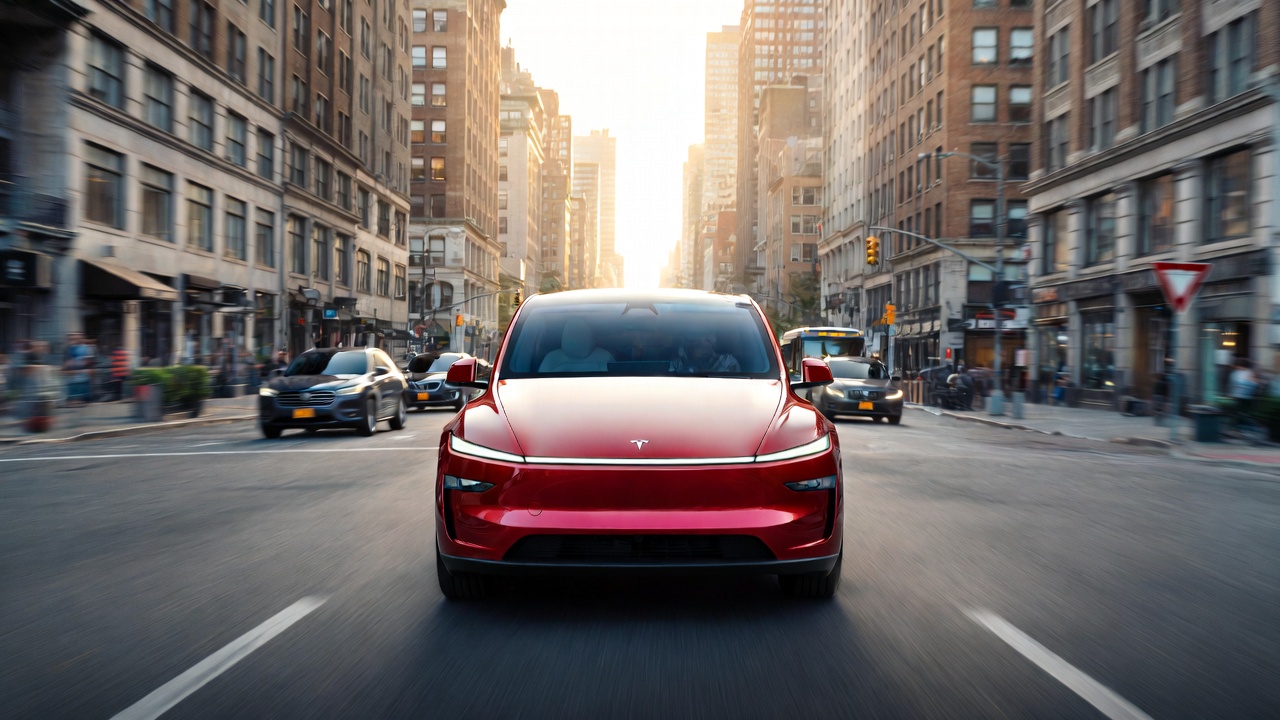
Tesla’s Full Self-Driving (Supervised) fleet is closing in on almost 7 billion total miles driven, as per data posted by the company on its official FSD webpage.
These figures hint at the massive scale of data fueling Tesla’s rapid FSD improvements, which have been quite notable as of late.
FSD mileage milestones
As can be seen on Tesla’s official FSD webpage, vehicles equipped with the system have now navigated over 6.99 billion miles. Tesla owner and avid FSD tester Whole Mars Catalog also shared a screenshot indicating that from the nearly 7 billion miles traveled by the FSD fleet, more than 2.5 billion miles were driven inside cities.
City miles are particularly valuable for complex urban scenarios like unprotected turns, pedestrian interactions, and traffic lights. This is also the difference-maker for FSD, as only complex solutions, such as Waymo’s self-driving taxis, operate similarly on inner-city streets. And even then, incidents such as the San Francisco blackouts have proven challenging for sensor-rich vehicles like Waymos.
Tesla’s data edge
Tesla has a number of advantages in the autonomous vehicle sector, one of which is the size of its fleet and the number of vehicles training FSD on real-world roads. Tesla’s nearly 7 billion FSD miles then allow the company to roll out updates that make its vehicles behave like they are being driven by experienced drivers, even if they are operating on their own.
So notable are Tesla’s improvements to FSD that NVIDIA Director of Robotics Jim Fan, after experiencing FSD v14, noted that the system is the first AI that passes what he described as a “Physical Turing Test.”
“Despite knowing exactly how robot learning works, I still find it magical watching the steering wheel turn by itself. First it feels surreal, next it becomes routine. Then, like the smartphone, taking it away actively hurts. This is how humanity gets rewired and glued to god-like technologies,” Fan wrote in a post on X.
News
Tesla starts showing how FSD will change lives in Europe
Local officials tested the system on narrow country roads and were impressed by FSD’s smooth, human-like driving, with some calling the service a game-changer for everyday life in areas that are far from urban centers.
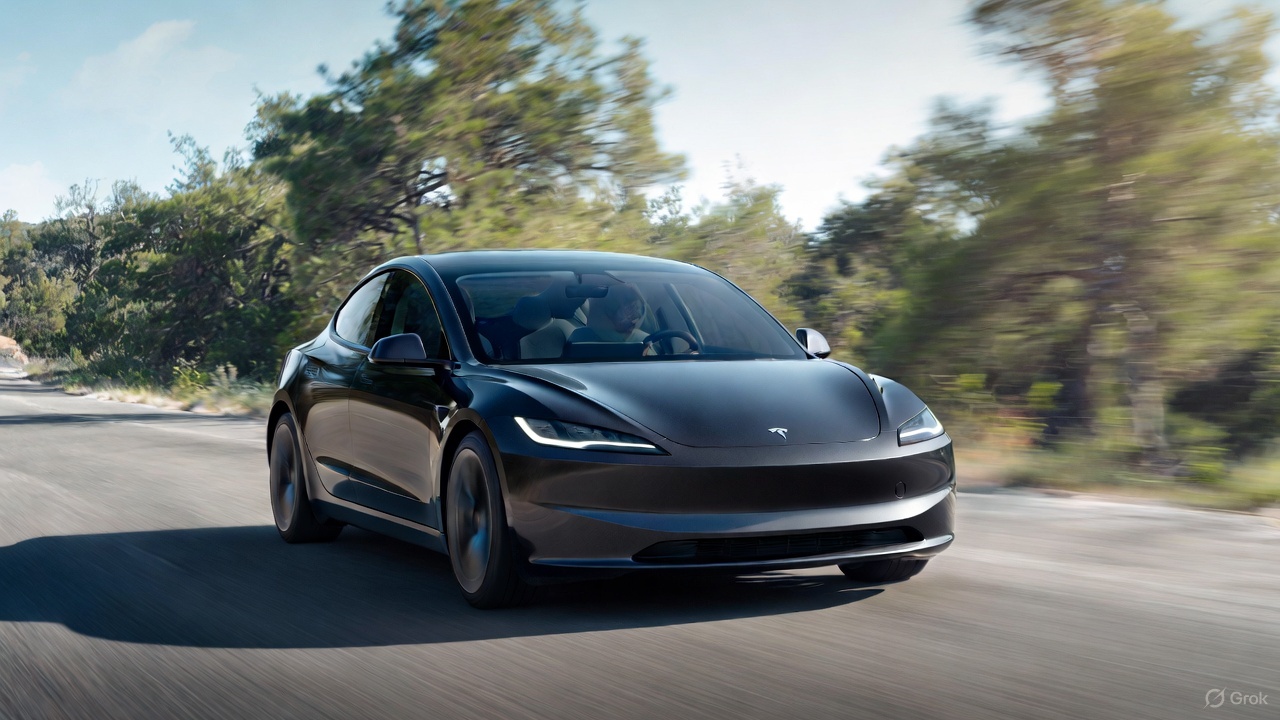
Tesla has launched Europe’s first public shuttle service using Full Self-Driving (Supervised) in the rural Eifelkreis Bitburg-Prüm region of Germany, demonstrating how the technology can restore independence and mobility for people who struggle with limited transport options.
Local officials tested the system on narrow country roads and were impressed by FSD’s smooth, human-like driving, with some calling the service a game-changer for everyday life in areas that are far from urban centers.
Officials see real impact on rural residents
Arzfeld Mayor Johannes Kuhl and District Administrator Andreas Kruppert personally tested the Tesla shuttle service. This allowed them to see just how well FSD navigated winding lanes and rural roads confidently. Kruppert said, “Autonomous driving sounds like science fiction to many, but we simply see here that it works totally well in rural regions too.” Kuhl, for his part, also noted that FSD “feels like a very experienced driver.”
The pilot complements the area’s “Citizen Bus” program, which provides on-demand rides for elderly residents who can no longer drive themselves. Tesla Europe shared a video of a demonstration of the service, highlighting how FSD gives people their freedom back, even in places where public transport is not as prevalent.
What the Ministry for Economic Affairs and Transport says
Rhineland-Palatinate’s Minister Daniela Schmitt supported the project, praising the collaboration that made this “first of its kind in Europe” possible. As per the ministry, the rural rollout for the service shows FSD’s potential beyond major cities, and it delivers tangible benefits like grocery runs, doctor visits, and social connections for isolated residents.
“Reliable and flexible mobility is especially vital in rural areas. With the launch of a shuttle service using self-driving vehicles (FSD supervised) by Tesla in the Eifelkreis Bitburg-Prüm, an innovative pilot project is now getting underway that complements local community bus services. It is the first project of its kind in Europe.
“The result is a real gain for rural mobility: greater accessibility, more flexibility and tangible benefits for everyday life. A strong signal for innovation, cooperation and future-oriented mobility beyond urban centers,” the ministry wrote in a LinkedIn post.
News
Tesla China quietly posts Robotaxi-related job listing
Tesla China is currently seeking a Low Voltage Electrical Engineer to work on circuit board design for the company’s autonomous vehicles.

Tesla has posted a new job listing in Shanghai explicitly tied to its Robotaxi program, fueling speculation that the company is preparing to launch its dedicated autonomous ride-hailing service in China.
As noted in the listing, Tesla China is currently seeking a Low Voltage Electrical Engineer to work on circuit board design for the company’s autonomous vehicles.
Robotaxi-specific role
The listing, which was shared on social media platform X by industry watcher @tslaming, suggested that Tesla China is looking to fill the role urgently. The job listing itself specifically mentions that the person hired for the role will be working on the Low Voltage Hardware team, which would design the circuit boards that would serve as the nervous system of the Robotaxi.
Key tasks for the role, as indicated in the job listing, include collaboration with PCB layout, firmware, mechanical, program management, and validation teams, among other responsibilities. The role is based in Shanghai.
China Robotaxi launch
China represents a massive potential market for robotaxis, with its dense urban centers and supportive policies in select cities. Tesla has limited permission to roll out FSD in the country, though despite this, its vehicles have been hailed as among the best in the market when it comes to autonomous features. So far, at least, it appears that China supports Tesla’s FSD and Robotaxi rollout.
This was hinted at in November, when Tesla brought the Cybercab to the 8th China International Import Expo (CIIE) in Shanghai, marking the first time that the autonomous two-seater was brought to the Asia-Pacific region. The vehicle, despite not having a release date in China, received a significant amount of interest among the event’s attendees.
